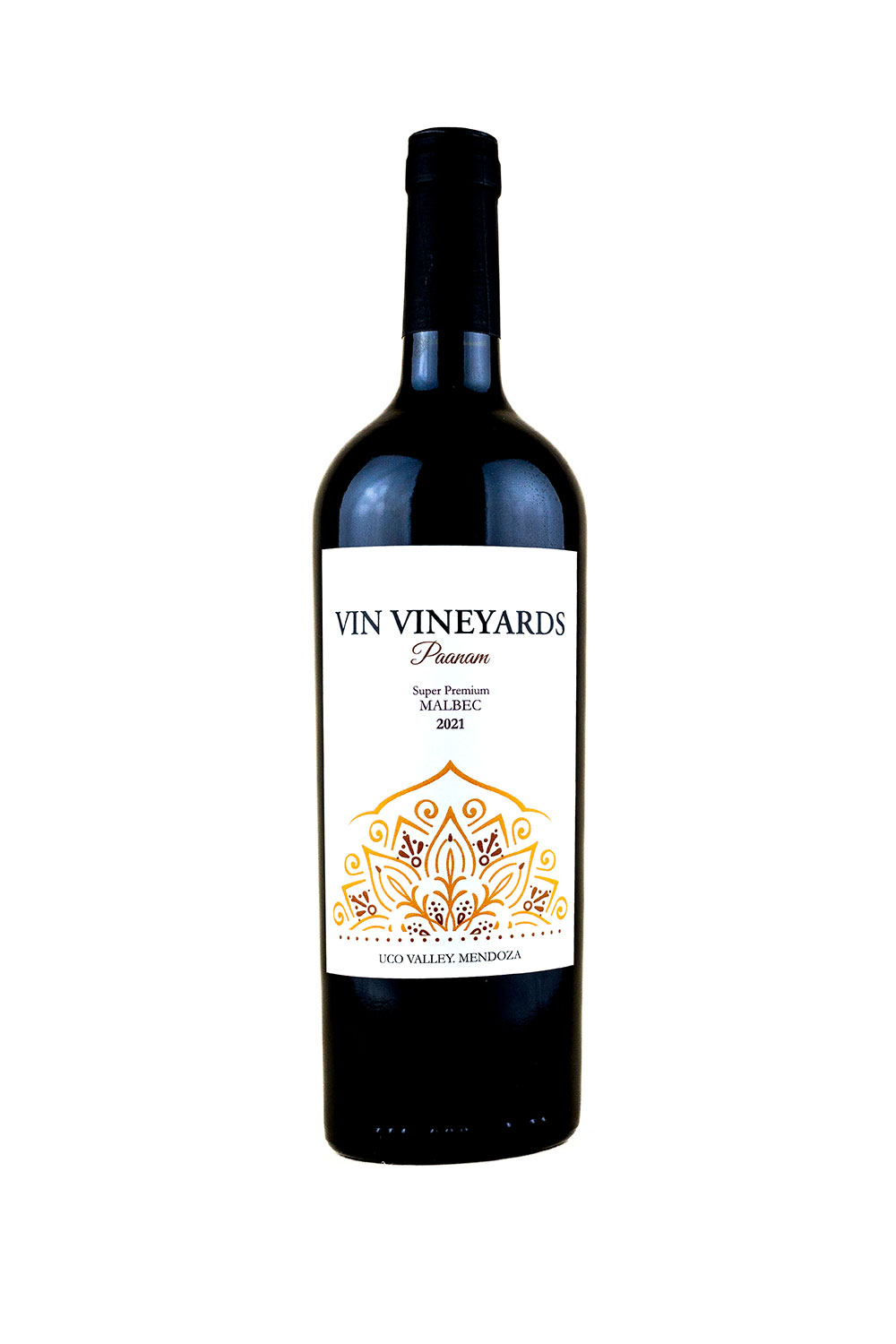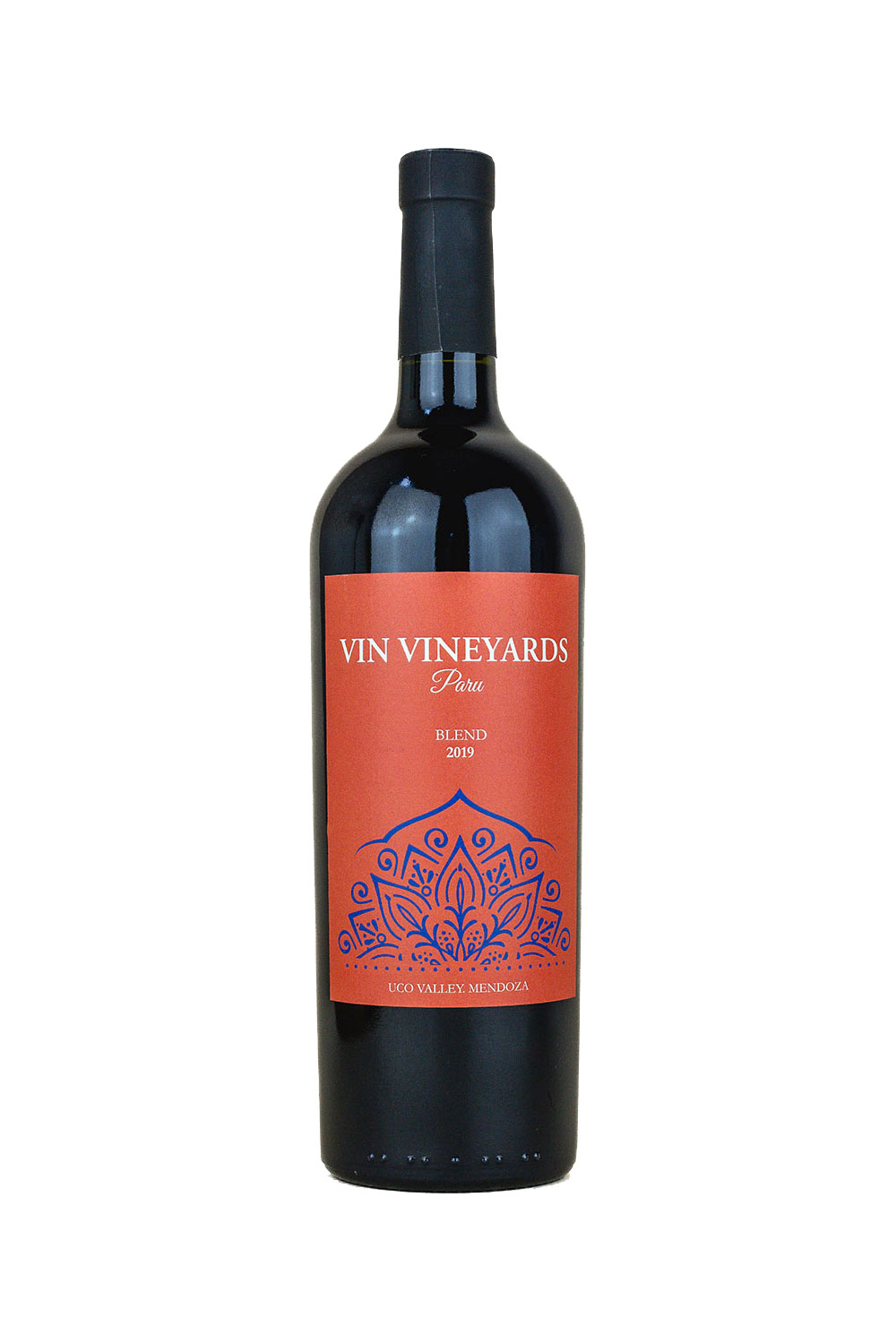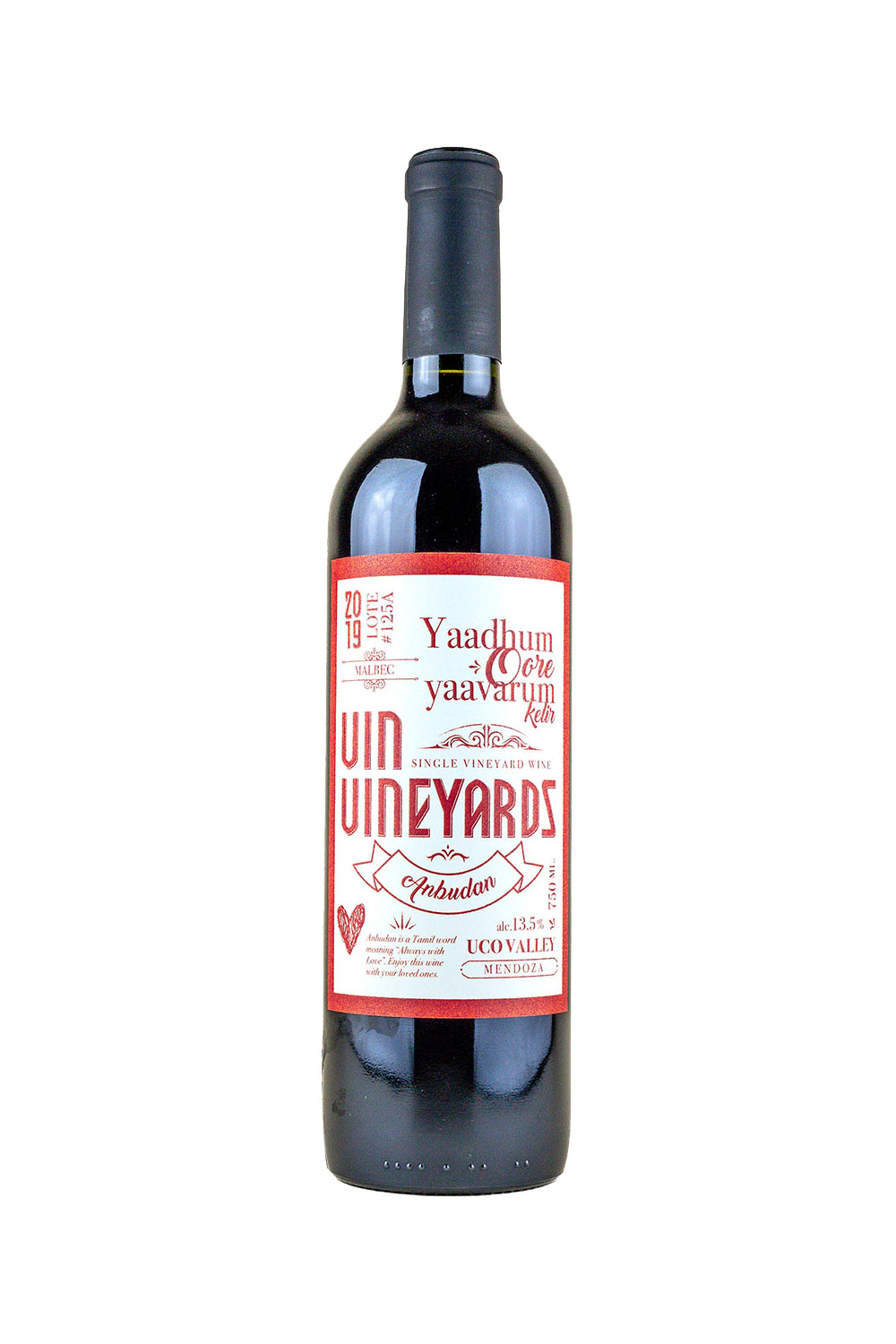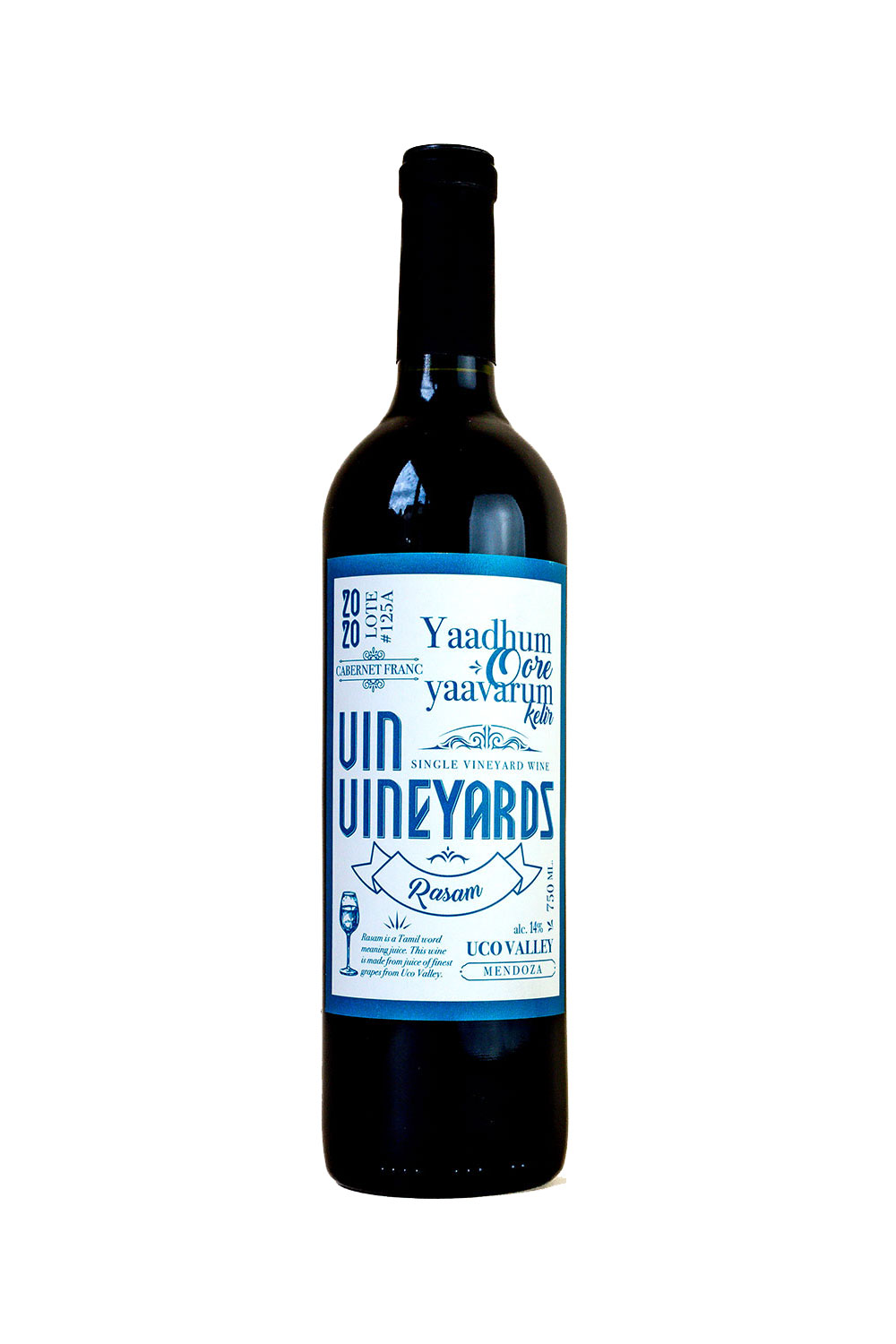2021 Paanam Malbec Blend Red Wine
Pricing includes duty and VAT.
£34.95 bottle (75cl)
In stock
Free Delivery on orders over £100. Click here for more details.
The 2021 Paanam is a super-premium wine aged for 20 months in new oak. This blended wine features pleasant tannins, expressive fruit, and good acidity, which ensures excellent aging potential. It has an intensely dark color with aromas of cherries, plums, and marmalade. On the palate, it is warm and soft with hints of sweet spice. Meticulous care was taken at every stage of the winemaking process to create Paanam, and its quality is evident in both its aroma and taste.
# of Bottles Produced: 588 – Limited Production.
Colour: Red
Type: Ultra Premium. Click here to learn more.
Vintage: 2021
Vintage Rating*: Not Yet Reported
Likely Maturity: Drink or Keep
Sweetness: Dry
Alcohol Vol: 14%
Grape/Blend: 95% Malbec, 5% Cabernet Franc
*Vintage rating gives you an indication of the quality of recent vintages in the world’s key wine regions. Each year is given a score, from 1 (very poor) to 10 (outstanding).
Appetiser Pairing
A charcuterie platter with salami, Ibérico ham, Taleggio cheese, Manchego cheese, farmhouse Cheddar. This wine goes well with Beef Empanadas, Stuffed Jalapeños, Beef/Lamb/Pork/veg kebabs.
Cheese Pairing
Blue cheeses (Example: Stilton), Aged Cheddar, Manchego, Taleggio and sharp herbal artisan cheeses.
Meat Pairing
BBE/Grilled Beef, Pork and Lamb.
Vegetarian Pairing
Stuffed Jalapeños, Cheddar Mac-n-Cheese, Grilled Mushroom, Roast Potatoes, egg plant, squash, sauteed spinach.
Free Delivery on orders over £100.
All orders that do not meet the minimum £100 threshold will incur a £7.95 delivery charge.
We deliver across mainland UK. The delivery charges are for UK Mainland only.




